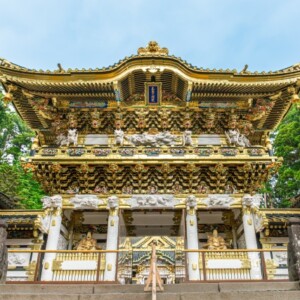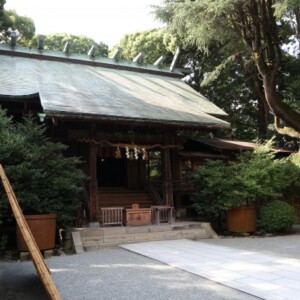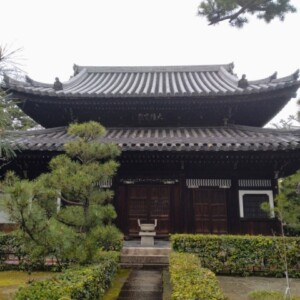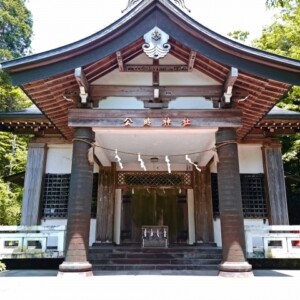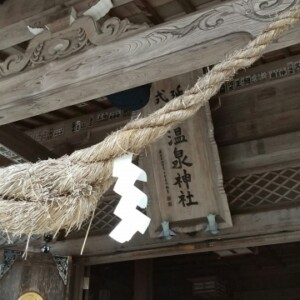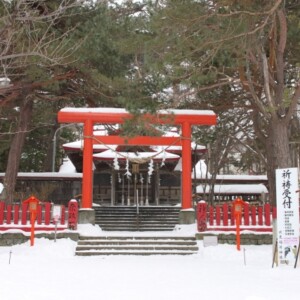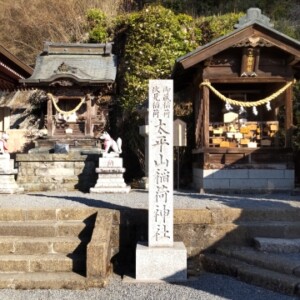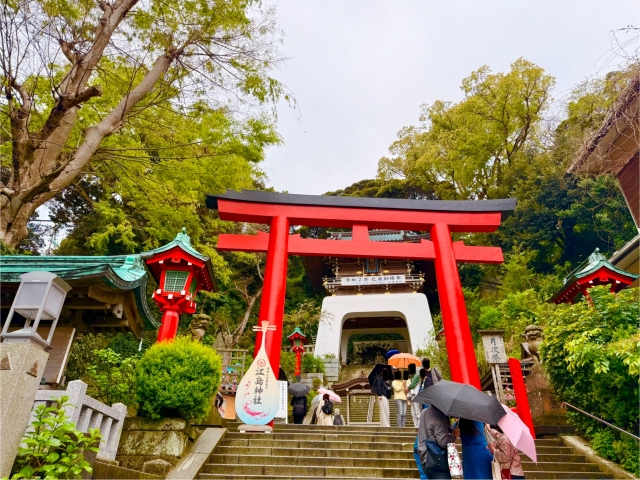
Eshima Shrine|Complete guide to the history, highlights, and worship information of this historic shrine
Eshima Shrine, located on Enoshima Island in Fujisawa City, Kanagawa Prefecture, is one of the three major benzaiten shrines in Japan with a history of over 1,400 years. Comprised of three shrines, Hetsumiya, Nakatsumiya, and Okutsumiya, the shrine is known for various benefits such as matchmaking, monetary fortune, and improvement in the arts, and is visited by many worshippers throughout the year.
Outline and basic information about Eshima Shrine
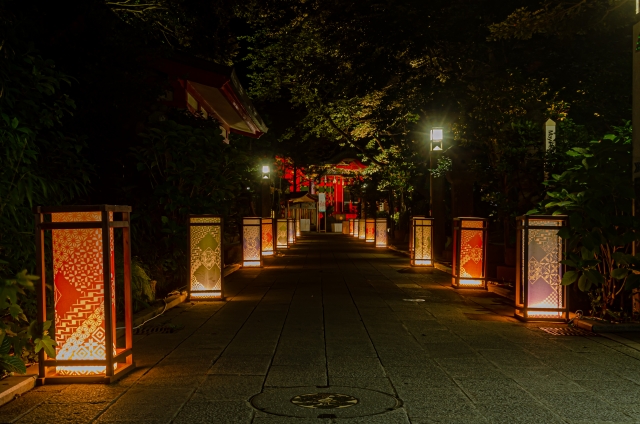
Eshima Shrine is located on Enoshima Island in Sagami Bay and is a shrine complex consisting of three shrines: Hetsumiya, Nakatsumiya, and Okutsumiya. The three shrines are collectively called Eshima Shrine, and each enshrines a different deity. The shrine is currently designated as a separate shrine by the Jinja Honcho, and was formerly a prefectural shrine.
As a shrine dedicated to the three Munakata goddesses, it enshrines the same deity as Munakata Taisha Shrine in Fukuoka and Itsukushima Shrine in Hiroshima. Until the Edo period, the shrine was called “Eshima Benzaiten” or “Eshima Myojin” as a temple dedicated to Benzaiten, but with the separation of Shinto and Buddhism in the early Meiji period, it took its present form as a pure Shinto shrine.
History and Origin
Eshima Shrine is said to have been founded in 552, the 13th year of Emperor Kinmei, the same year that Buddhism was officially introduced to Japan. According to shrine legend, the shrine began when a deity was enshrined in a dragon cave (present-day Iwaya) in the south of the island by order of Emperor Kinmei.
In the 4th year of Emperor Monmu (700), an ascetic named Yaku Kozumi conducted ascetic training in a cave on the island of Enoshima and opened a spiritual center for ascetic practices. Later, Kukai built Iwaya Hongu in 814, Jikaku Daishi built Kaminomiya (present-day Nakatsumiya) in 853, and Jikaku Shonin Ryoshin built Shimonomiya (present-day Henzumiya) in 1206 at the request of Minamoto no Sanetomo.
During the Kamakura period (1185-1333), the shrine attracted the strong faith of the Kamakura shogunate and the Hojo clan, including Minamoto no Yoritomo, and during the Edo period (1603-1868), the shrine was revered by Tokugawa Ieyasu, who donated 35 koku of company land. In 1872, with the separation of Shintoism and Buddhism, the shrine became a Shinto shrine and was renamed “Eshima Shrine” to the present day.
Deities and Benefits
Eshima Shrine enshrines the Three Goddesses of Munakata: Takirihiuri-no-Mikoto at Okutsumiya Shrine, Ichisunjimahiuri-no-Mikoto at Nakatsumiya Shrine, and Tasuntsuhiuri-no-Mikoto at Henketsumiya Shrine, collectively called “Eshima Ojin.
These three goddesses were born at the time of the oath between Amaterasu and Susano-no-mikoto, and are regarded as protectors of shipping, fishing, and transportation. Until the Edo period (1603-1868), they were worshipped as Benzai Tenju, the goddess of the sea and water, as well as the god of happiness, wealth, and the merit of improving one’s craft. Even today, the shrine is visited by worshippers who make various wishes, such as for family safety, business prosperity, business prosperity, matchmaking, and improvement in the arts.
Eshima Shrine Highlights
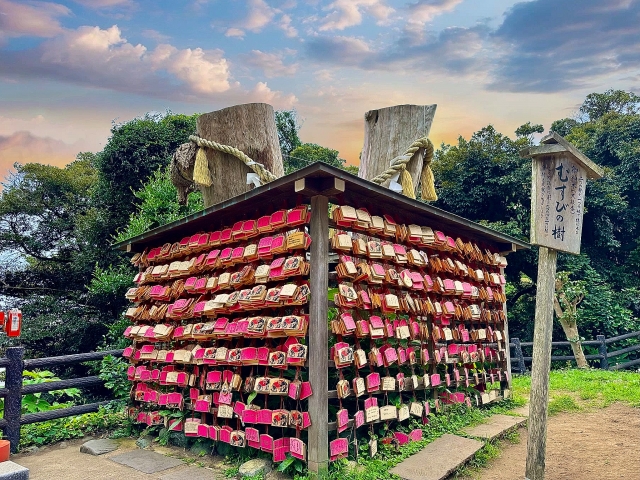
The most distinctive feature of Eshima Shrine is that the three shrines are built in different locations. The topography of Enoshima is utilized in the layout of the shrine, allowing visitors to visit the three shrines as they tour the island. Each shrine pavilion contains a number of structures and cultural assets of high historical value.
Attractions of the buildings and structures of the three shrines
Henshimiya Shrine, dedicated to the worship of Tasuntsuhiru no Mikoto, was built by Minamoto no Sanetomo in the first year of Ken’ei (1206) and was rebuilt in Enpo 3 (1675). The beautiful Gongen-zukuri style shrine pavilion was reconstructed in 1976. There is a dedication hall in the precincts of the shrine, where the eight-armed Benzaiten and Myouon Benzaiten are enshrined.
Nakatsu-miya Shrine is dedicated to Ichisunshimahiru-no-Mikoto and was founded by Jikaku Daishi in the 3rd year of Emperor Montoku’s reign (853). In 1689, the shrine was rebuilt in the Gongen-zukuri style by the fifth Shogun, Tsunayoshi Tokugawa, and in 1996, the shrine was completely renovated to reproduce the vivid vermilion of the Genroku period.
The Okutsumiya Shrine is dedicated to Takirihiru-no-Mikoto, and was formerly called the main shrine or the Otabisho. The shrine was rebuilt in 1842 in the irimoya style, and the ceiling of the hall of worship features a “turtle staring in all directions” painted by the Edo period painter Hoitsu Sakai, which is known as a mysterious picture in which the eyes meet from every angle.
Nature and scenic beauty
Eshima Shrine is blessed with beautiful scenery that takes advantage of its location on Enoshima Island in Sagami Bay. From the approach connecting the three shrines, one can see the sea of Shonan and Mt.
Visitors can enjoy the seasonal flowers and Someiyoshino trees at the Nakatsumiya Plaza, which is a relaxing spot where visitors can relax in nature on their way to the shrine. Wood-decked observation decks located throughout the island offer beautiful panoramic views of the Shonan Coast.
Cultural Properties and Important Collections
Eshima Shrine preserves many valuable cultural assets that tell the story of its long history. The bronze torii gateway, located near the entrance to Enoshima, has a powerful Mino Turtle carved into the lower part of the pillar, which has turned blue with age, and is designated as a Fujisawa City-designated structure.
The Okutsumiya Shrine has a stone torii gate dedicated by Minamoto no Yoritomo, which has been preserved as a cultural asset of high historical value. The eight-armed Benzaiten (Benzaiten with eight arms) and Myoin Benzaiten (Benzaiten with a myoin sound), which are enshrined in the Hengu Shrine’s votive hall, are valuable Buddhist statues that tell the story of the period when Shintoism and Buddhism were combined in the Edo period.
The stone lanterns dedicated in the precincts of Nakatsugu Shrine provide a glimpse into the beliefs of merchants, entertainers, and common people during the Edo period. These cultural assets are a precious heritage that conveys the long history of Eshima Shrine and the deep faith of its people.
Guide to Worship and Visiting the Shrine
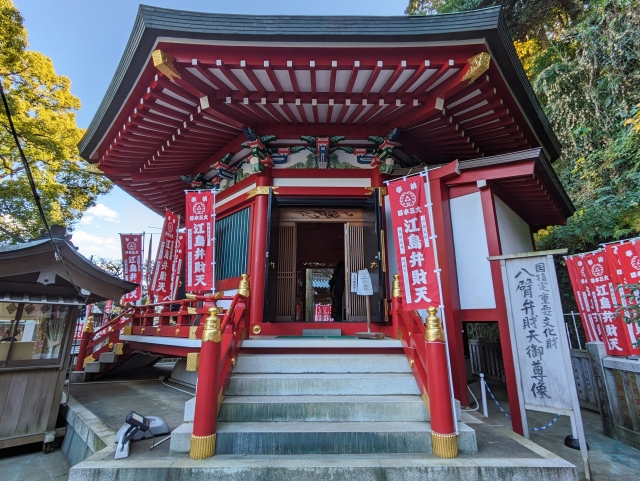
The official way to visit Eshima Shrine is to “Sanja mairi,” or visit the three shrines: Henzumiya, Nakatsumiya, and Okutsumiya. Since each shrine enshrines a different deity, it is believed that by visiting each shrine, one can receive the full divine virtues of Eshima-Dainokami. When visiting the shrine, please follow the manners of the shrine and pray with all your heart.
Worship Etiquette and Manners
When visiting a shrine, first bow in front of the torii gate before entering the shrine grounds. At the hand- and mouth-cleansing booth, purify your body by cleansing your left hand, right hand, and mouth, in that order, before visiting the shrine. In front of the hall of worship, pray in the manner of “Ni-hai Ni-hate Ichi-hai,” and quietly pay in monetary offerings.
The three shrines of Eshima Shrine are usually visited in the order of Henzumiya Shrine, Nakatsumiya Shrine, and Okutsumiya Shrine. There is no set time limit for visiting each shrine, but please be considerate of other visitors when the shrine is crowded. Photography is permitted within the shrine precincts, but should be refrained from inside the shrine pavilions and in sacred areas.
Annual and Seasonal Events
Various festivals and events are held throughout the year at Eshima Shrine. The annual festival is held on the first day of the snake in April and the first day of the boar in October and attracts many worshippers.
Of particular note is the Hongjong Benten Grand Festival held once every 60 years, a special festival held jointly by Eshima Shrine and Engakuji Temple in Kamakura City. This festival celebrates the completion of the Hong Bell, a national treasure cast in 1301, and is based on the legend that Hojo Sadatoki made a seven-day visit to Ejima Shrine to obtain metal that looked like a dragon’s head and successfully cast it.
On July 14, a portable shrine procession is held as part of the annual festival of the Yasaka Shrine, the youngest shrine in the area, and is a popular summer event. The beauty of nature in each season is also a source of enjoyment, attracting visitors throughout the year: cherry blossoms in spring, greenery in summer, autumn leaves in fall, and clear air and views of Mount Fuji in winter.
Red Seal and Charm Information
Eshima Shrine offers 10 types of red seals, which many visitors receive to commemorate their visit to the three shrines. Red seals are available at the red seal booths near each shrine building and are accepted from 8:30 a.m. to 5:00 p.m. By collecting red seals from each of the three shrines, you can preserve the memory of your visit to Eshima Shrine.
A wide variety of more than 60 types of good luck charms are available, the most popular of which is the “Ryujin-mamori” featuring a dragon god. The Biwa-mamori, a biwa-shaped amulet with a depiction of Benzaiten (a goddess of wealth), is also popular for its blessings of good fortune and improvement in the performing arts.
The pink “Koi musubi/en musubi ema” is said to bring good luck if you write your name on it. Visitors can choose the amulet that best fits their wishes for family safety, business prosperity, academic success, traffic safety, and so on.
Access/Use Information
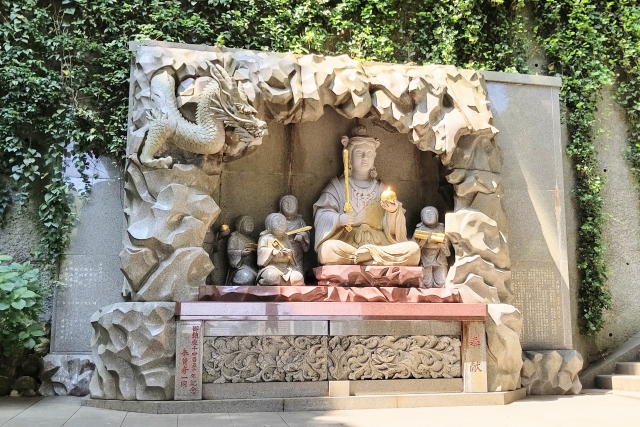
Ejima Shrine is conveniently accessible by train, with three lines available: Odakyu Electric Railway, Enoshima Electric Railway, and Shonan Monorail. Each of these is closest to a different station, but all are within walking distance of the entrance to Enoshima. Access by car is also possible, but public transportation is recommended during the tourist season and on weekends when the roads are congested.
Transportation Access
The closest train access is a 15-minute walk from Katase Enoshima Station on the Odakyu Electric Railway, a 19-minute walk from Enoshima Station on the Enoshima Electric Railway, and a 20-minute walk from Shonan Enoshima Station on the Shonan Monorail.
From Katase Enoshima Station, cross the Enoshima Benten Bridge into Enoshima to reach the Shu no Torii (Red Gate). From both Enoshima Station and Shonan Enoshima Station, visitors can take different routes to Enoshima, but both are well signposted, so you will not get lost.
If accessing by car, it takes about 40 minutes from the Chigasaki Kaigan IC of the Shin-Shonan Bypass. Direct buses are also available from Haneda Airport, and Enoden and Keihin Kyuko buses connect Haneda Airport to Fujisawa, Kamakura, and Ofuna Stations. For detailed timetables and fares, please contact the respective bus companies.
<Address> 2-3-8 Enoshima, Fujisawa-shi, Kanagawa 251-0036
Hours of Operation, Fees, and Parking Information
There are no restrictions on visiting hours at Eshima Shrine, but the ticket office and red seal service is open from 8:30 a.m. to 5:00 p.m. While visiting the shrine itself is free of charge, there may be a fee to see Benzaiten at the Bonan-den or at some special locations.
There are several paid parking lots on Enoshima, but we recommend arriving early, as they are often full during the tourist season and on weekends. Also, parking fees are relatively high because Enoshima is a tourist destination.
It takes about 2 hours to visit the three shrines on foot, but you can use the Enoshima Escalator (an uphill escalator) to get from Henzumiya Shrine to Nakatsukiya Shrine. The escalator is divided into three sections, so that even those who are not physically fit or have weak legs and backs can visit the shrines without anxiety.
Please check the official website or the Fujisawa City Tourist Association website for the latest information before visiting the shrine, as details such as operating hours and fees are subject to change.
Reference sites
Eshima Shrine official website: http://enoshimajinja.or.jp/



